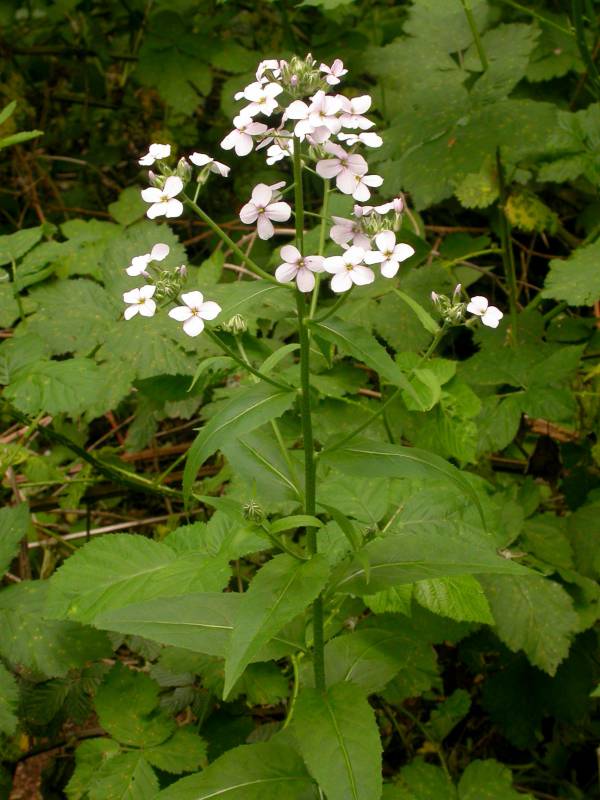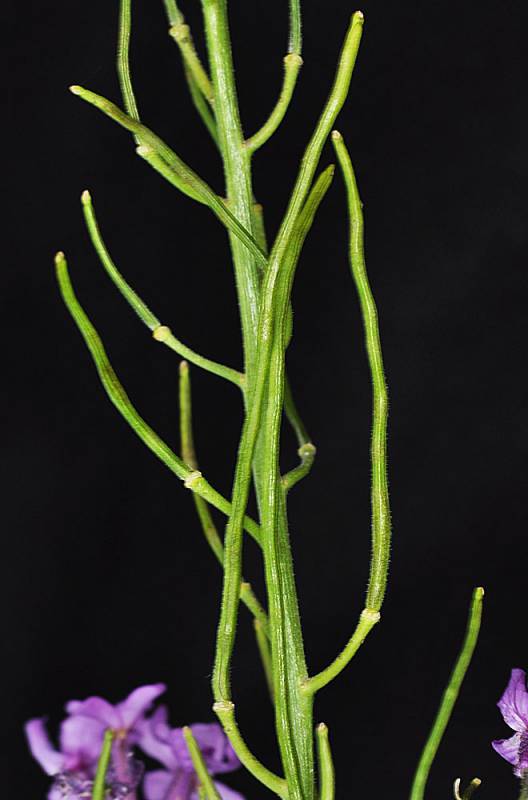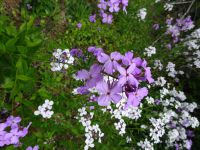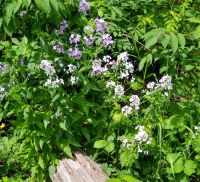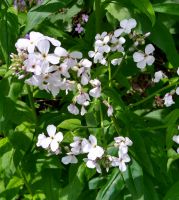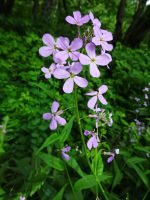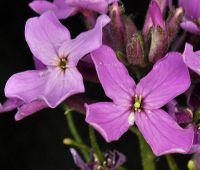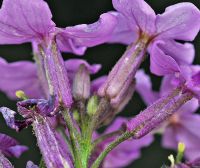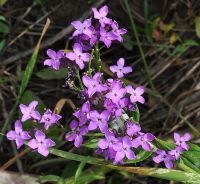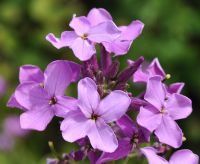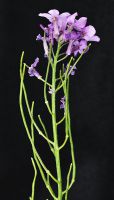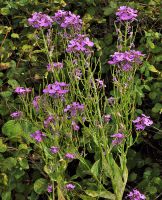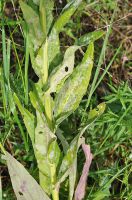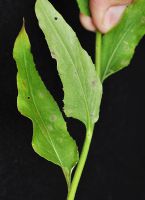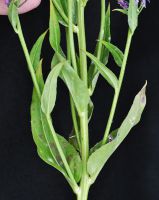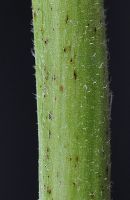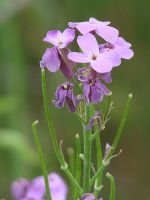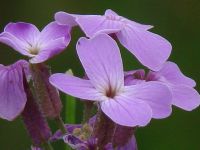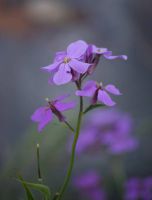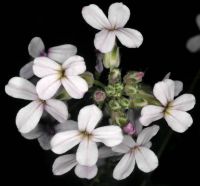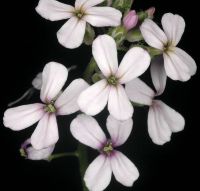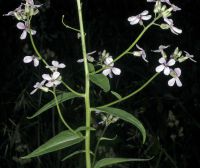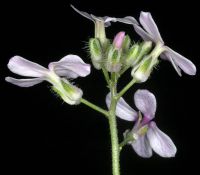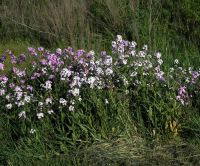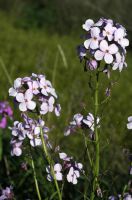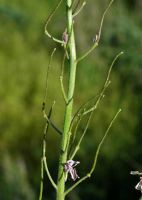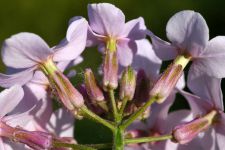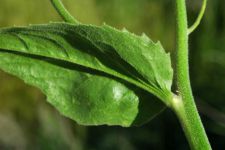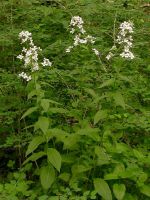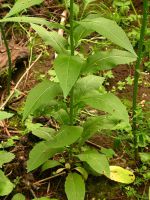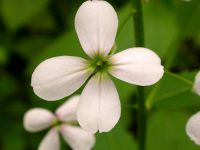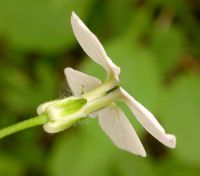Distribution: Occurring on both sides of the Cascades crest in Washington; British Columbia to California, east across most of North America to the Atlantic Coast.
Habitat: Roadsides, disturbed forest edge, wastelots, and other disturbed areas where escaping from cultivation.
Flowers: May-June
Origin: Introduced from Europe
Growth Duration: Biennial, Perennial
Conservation Status: Not of concern
Pollination: Butterflies, moths
Herbaceous perennial with 1-several simple or sparingly branched stems 5-13 dm. tall, pubescent with stiff, simple to forked hairs, and also with shorter, forked hairs.
Leaves alternate, lanceolate to lance-ovate, serrate-dentate, 5-20 cm. long, the lower ones long-petiolate, the upper ones often sessile.
Inflorescence of bractless, compound racemes; sepals 4, hairy, erect, the outer pair saccate at the base; petals 4, clawed, white to rose or pale purple, 18-25 mm. long; stamens 6; stigma deeply 2-lobed, the lobes erect.
Siliques linear, nearly terete, 4-10 cm. long, the valves 1-nerved; seeds in 1 series, not winged.
Publication: Sp. Pl. 2: 663. 1753.
PNW Herbaria: Specimen records of Hesperis matronalis in the Consortium of Pacific Northwest Herbaria database
WA Flora Checklist: Hesperis matronalis checklist entry
OregonFlora: Hesperis matronalis information
E-Flora BC: Hesperis matronalis atlas page
CalPhotos: Hesperis matronalis photos


